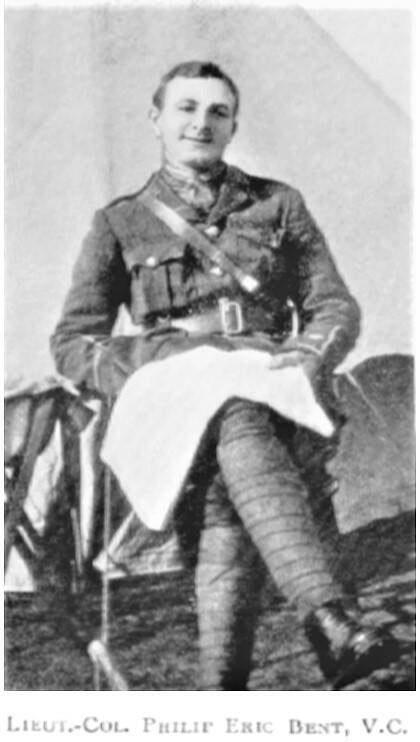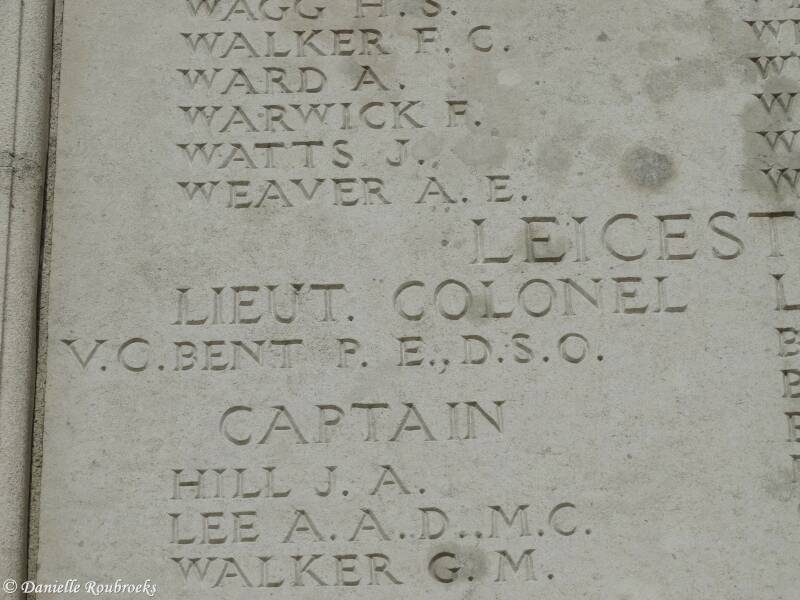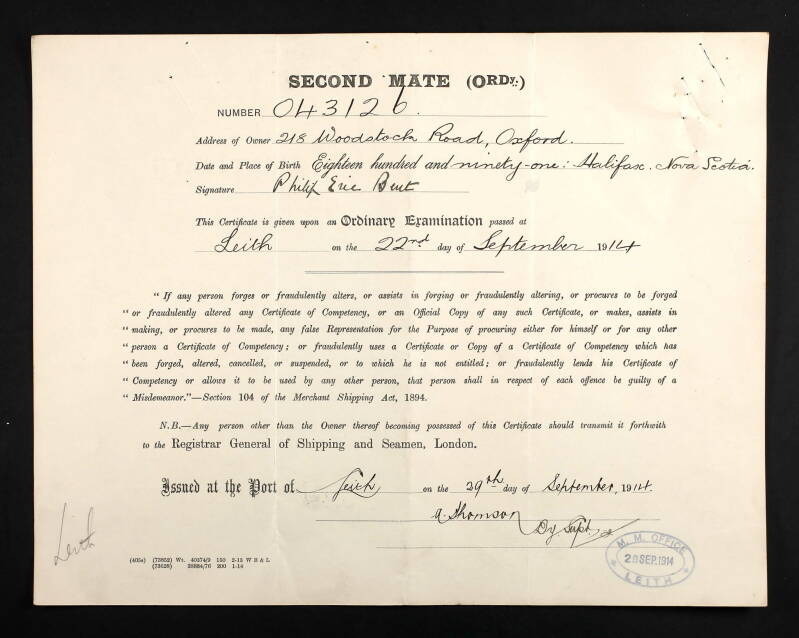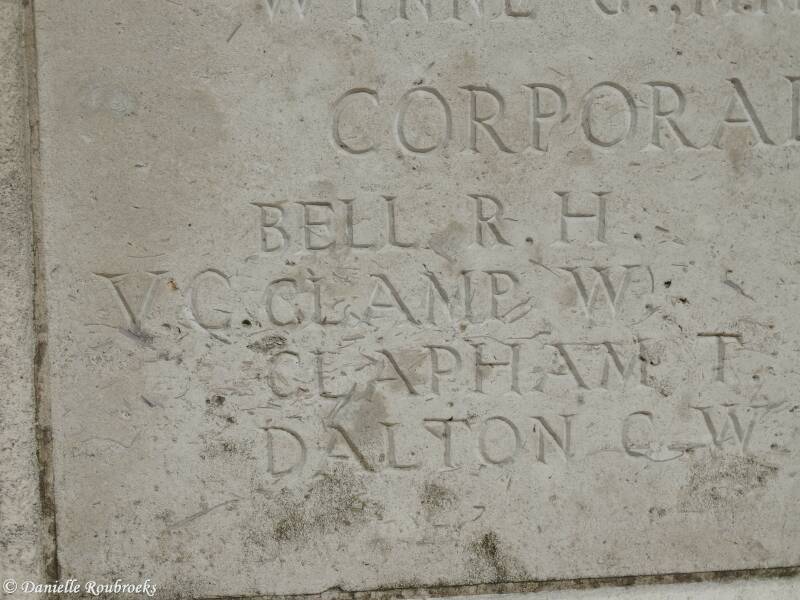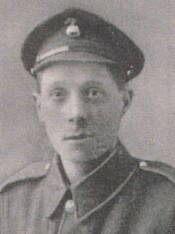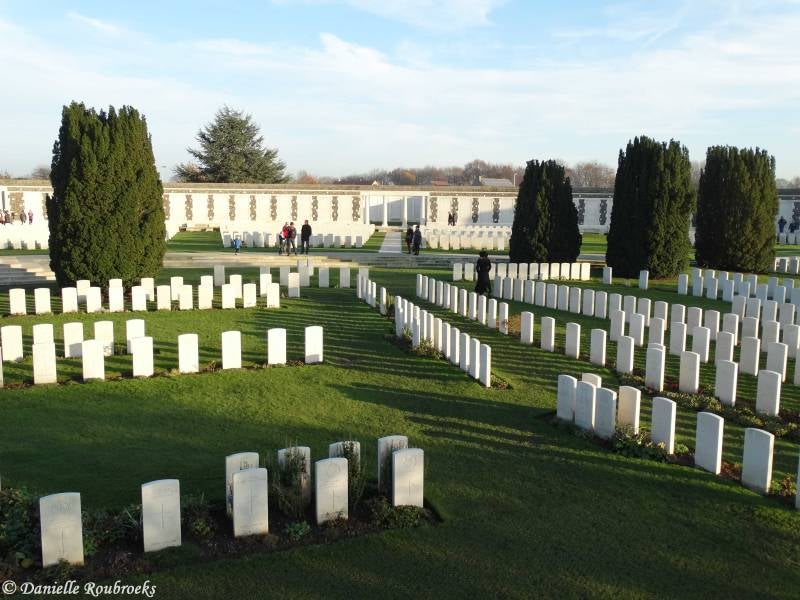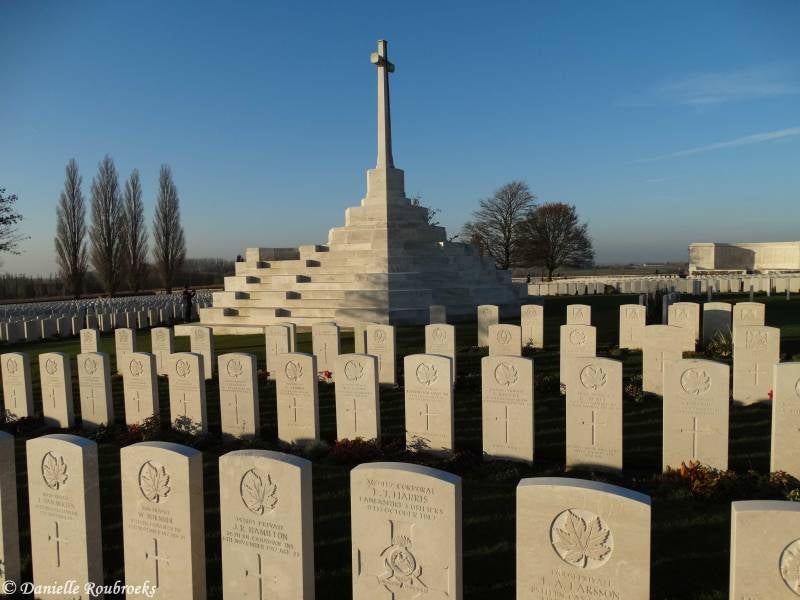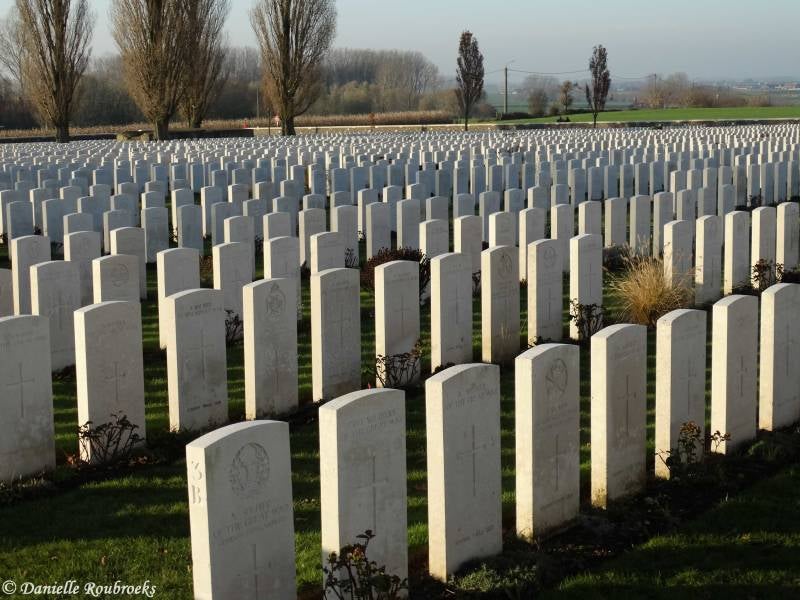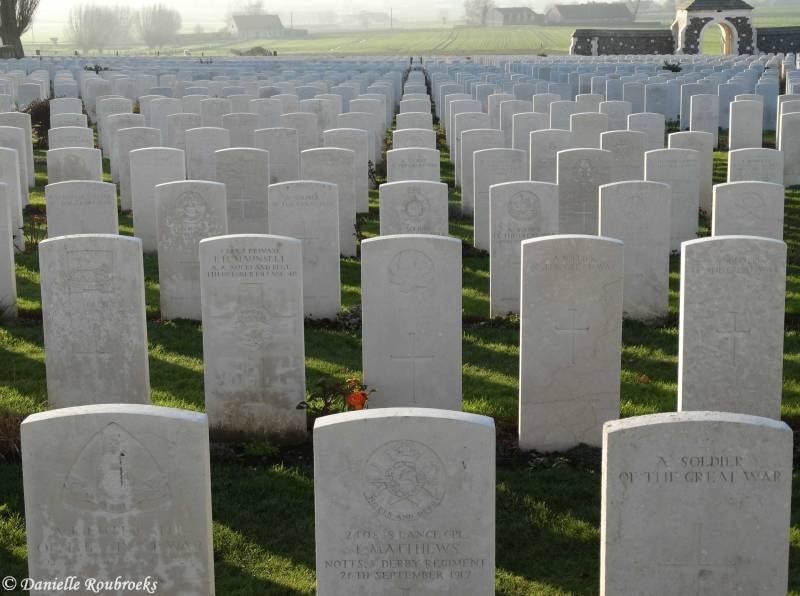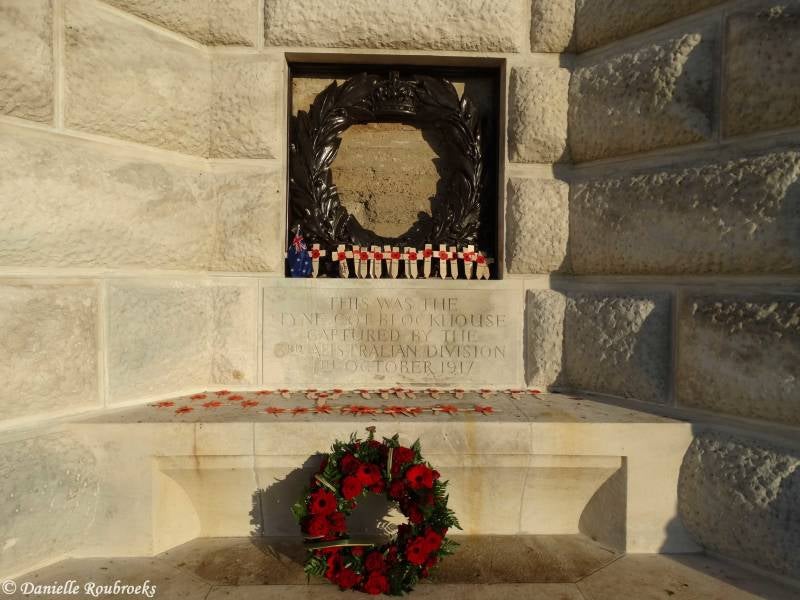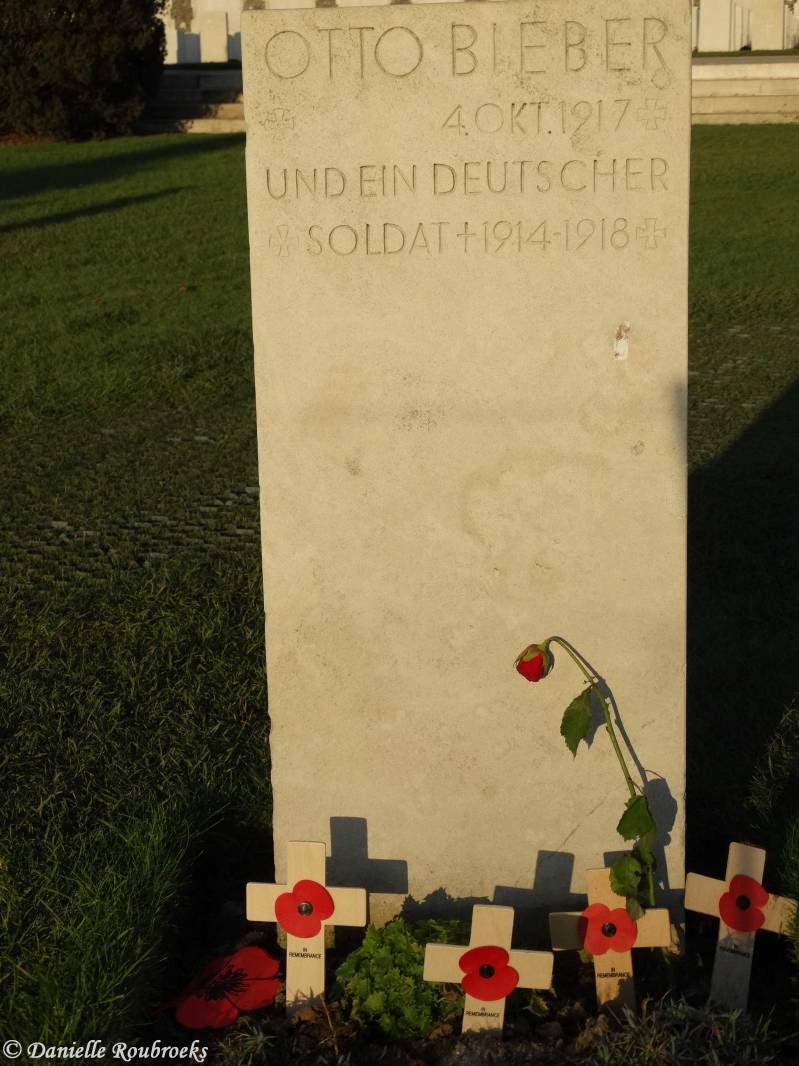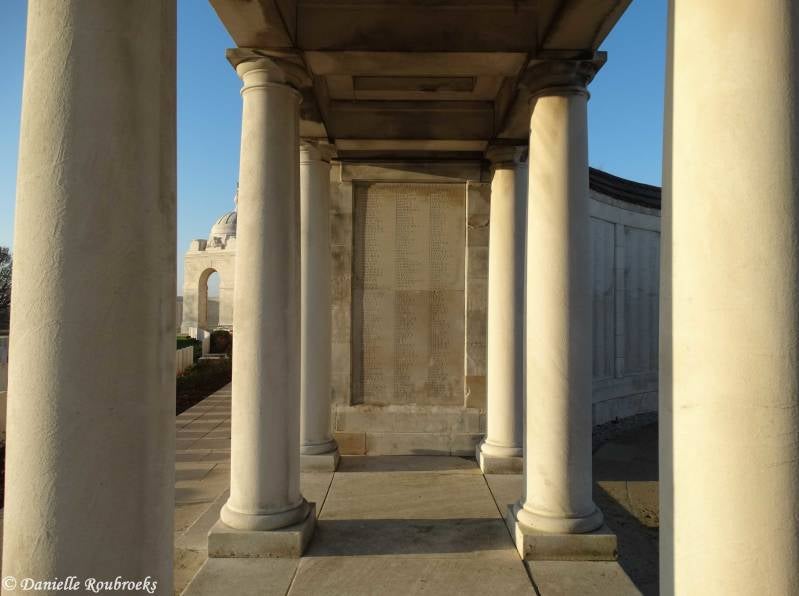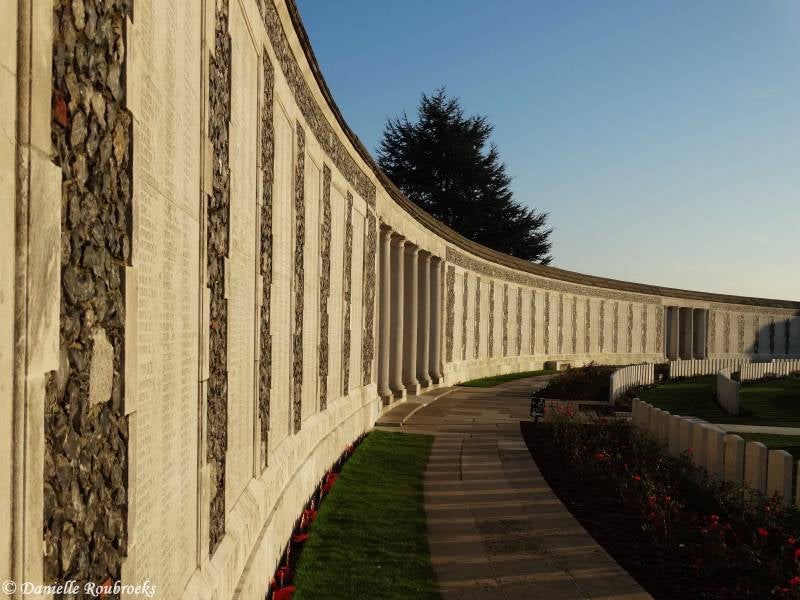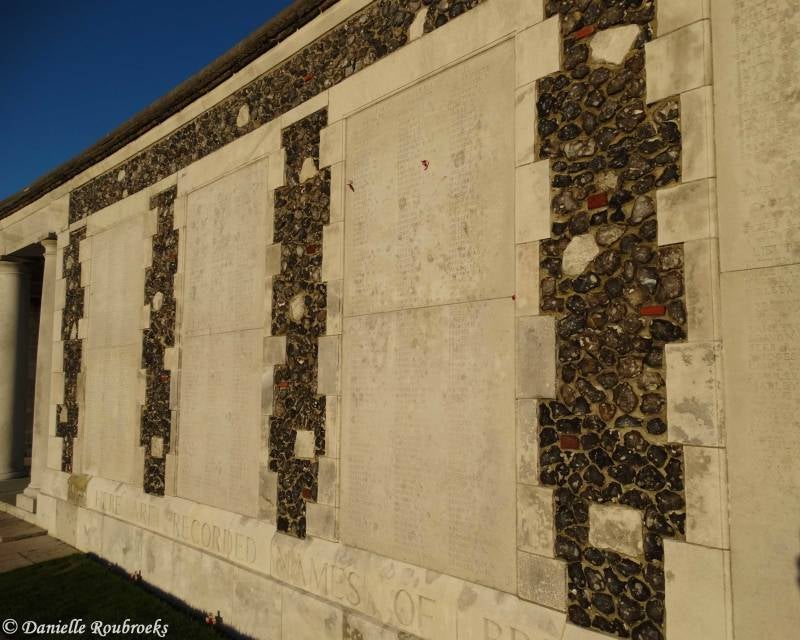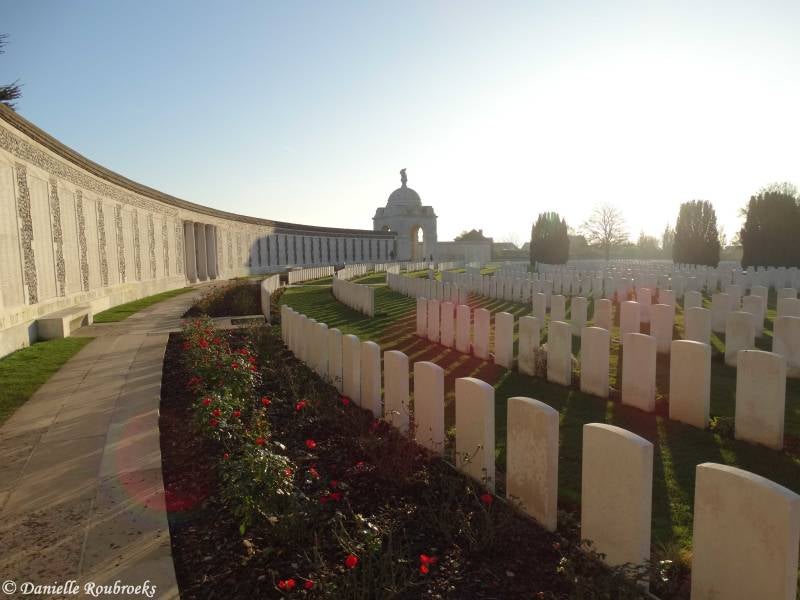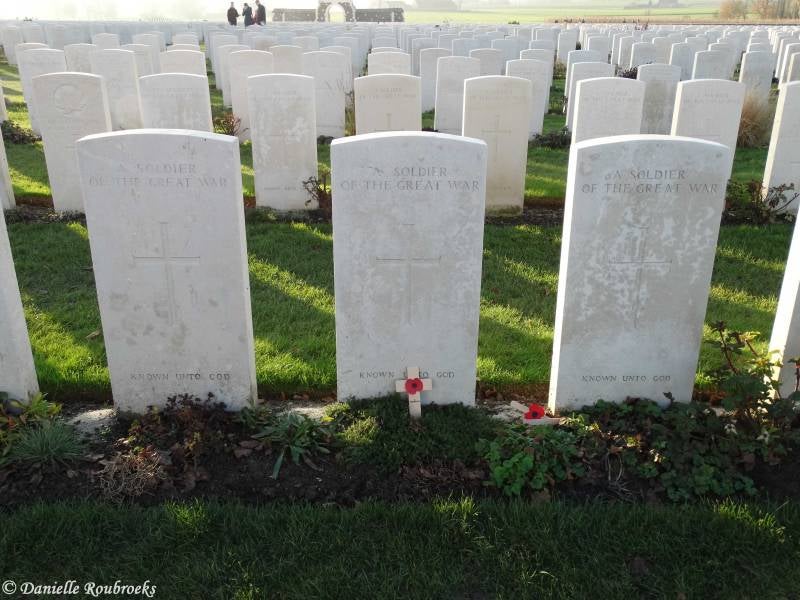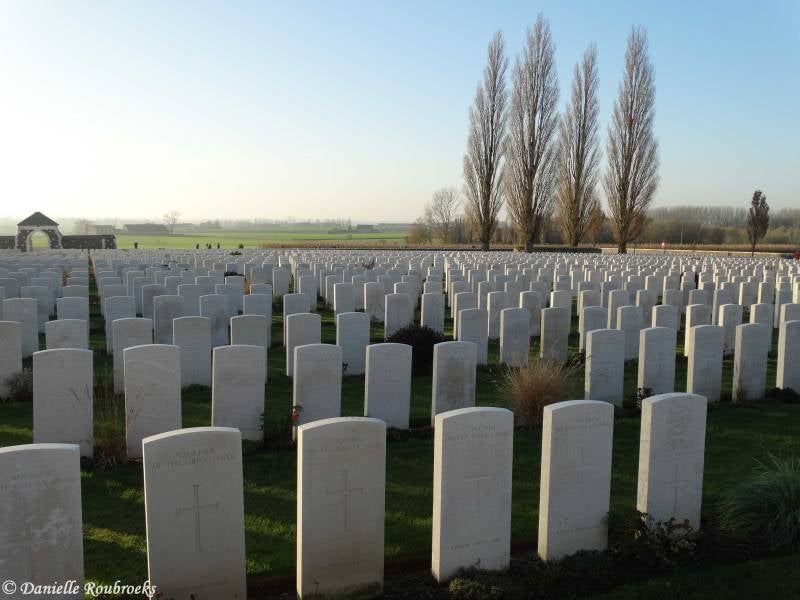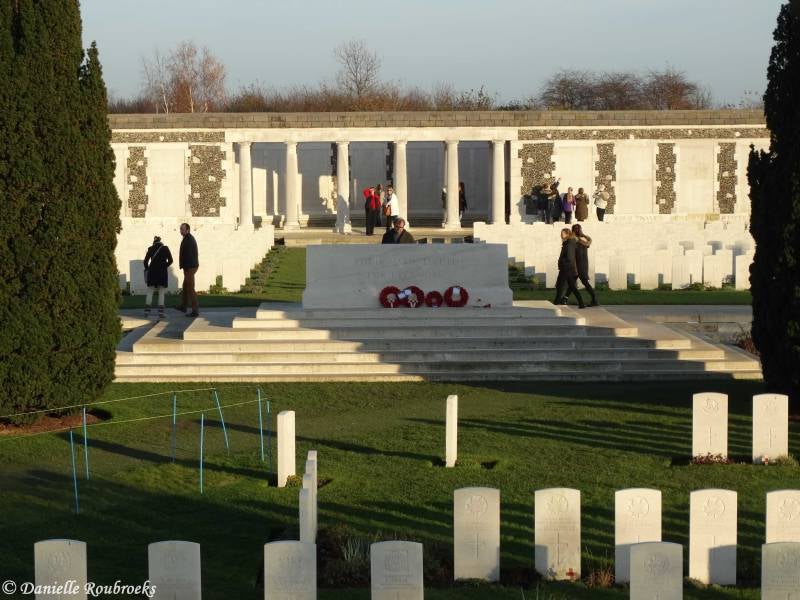Tyne Cot Memorial
History Information (Source: CWGC)
Tyne Cot or Tyne Cottage was a barn named by the Northumberland Fusiliers which stood near the level crossing on the road from Passchendaele to Broodseinde. Around it were a number of blockhouses or ‘pillboxes'. The barn, which had become the centre of five or six German blockhouses, was captured by the 3rd Australian Division on 4 October 1917, in the advance on Passchendaele. One of these pillboxes was unusually large and was used as an advanced dressing station after its capture. From 6 October to the end of March 1918, 343 graves were made, on two sides of it, by the 50th (Northumbrian) and 33rd Divisions, and by two Canadian units. The cemetery was in German hands again from 13 April to 28 September, when it was finally recaptured, with Passchendaele, by the Belgian Army.
Tyne Cot Cemetery is in an area known as the Ypres Salient. Broadly speaking, the Salient stretched from Langemarck in the north to the northern edge in Ploegsteert Wood in the south, but it varied in area and shape throughout the war. Tyne Cot Cemetery was greatly enlarged after the Armistice when remains were brought in from the battlefields of Passchendaele and Langemarck, and from a few small burial grounds,
The Tyne Cot Memorial forms the north-eastern boundary of Tyne Cot Cemetery and commemorates nearly 35,000 servicemen from the United Kingdom and New Zealand who died in the Ypres Salient after 16 August 1917 and whose graves are not known. The memorial stands close to the farthest point in Belgium reached by Commonwealth forces in the First World War until the final advance to victory.
The Tyne Cot Memorial is one of four memorials to the missing in Belgian Flanders which cover the area known as the Ypres Salient. Broadly speaking, the Salient stretched from Langemarck in the north to the northern edge in Ploegsteert Wood in the south, but it varied in area and shape throughout the war.
The Tyne Cot Memorial now bears the names of almost 35,000 officers and men whose graves are not known. Incorporated within the Tyne Cot Memorial is the New Zealand Memorial commemorating the names of nearly 1,200 men who gave their lives in the Battle of Broodseinde and the Third Battle of Ypres in October 1917. The memorial was unveiled by Sir Gilbert Dyett, the Australian soldier and veterans' rights activist, on 20 June 1927.
VICTORIA CROSS
Lieutenant Colonel Philip Eric BENT - 9th Bn. Leicestershire Regiment
Died 01 October 1917 Age 26
Country of Service: United Kingdom
Awards: Victoria Cross, Distinguished Service Order, Twice Mentioned in Despatches
Citation
An extract from "The London Gazette," No. 30471, dated 11th Jan., 1918, records the following:- For most conspicuous bravery, when during a heavy hostile attack, the right of his own command and the battalion on his right were forced back. The situation was critical owing to the confusion caused by the attack and the intense artillery fire. Lt. Col. Bent personally collected a platoon that was in reserve, and together with men from other companies and various regimental details, he organised and led them forward to the counter-attack, after issuing orders to other officers as to the further defence of the line. The counter-attack was successful and the enemy were checked. The coolness and magnificent example shown to all ranks by Lt.-Col. Bent resulted in the securing of a portion of the line which was of essential importance for subsequent operations. This very gallant officer was killed whilst leading a charge which he inspired with the call of "Come on the Tigers."
Grave Reference: Panel 50A
(Source: Wikipedia)
Corporal William CLAMP - 42537 - 6th Bn. Yorkshire Regiment
Died 09 October 1917 Age 26
Country of Service: United Kingdom
Awards: Victoria Cross
Citation
An extract from "The London Gazette," No. 30433, dated 18th Dec., 1917, records the following:-"For most conspicuous bravery when an advance was being checked by intense machine-gun fire from concrete blockhouses and by snipers in ruined buildings. Corporal Clamp dashed forward with two men and attempted to rush the largest blockhouse. His first attempt failed owing to the two men with him being knocked out, but he at once collected some bombs, and calling upon two men to follow him, again dashed forward. He was first to reach the blockhouse and hurled in bombs, killing many of the occupants. He then entered and brought out a machine-gun and about twenty prisoners, whom he brought back under heavy fire from neighbouring snipers. This non-commissioned officer then again went forward encouraging and cheering the men, and succeeded in rushing several snipers' posts. He continued to display the greatest heroism until he was killed by a sniper. His magnificent courage and self-sacrifice was of the greatest value and relieved what was undoubtedly a very critical situation.
Grave Reference: Panel 52
(Source: Wikipedia)
Lance Corporal Ernest SEAMAN - 42364 - 2nd Bn. Royal Inniskilling Fusiliers
Died 29 September 1918 Age 25
Country of Service: United Kingdom
Awards: Victoria Cross
Citation
An extract from "The London Gazette," No.31012, dated 15th Nov., 1918, records the following:- "For most conspicuous bravery and devotion to duty. When the right flank of his company was held up by a nest of enemy machine guns, he, with great courage and initiative, rushed forward under heavy fire with his Lewis gun and engaged the position single-handed, capturing two machine guns and twelve prisoners and killing one officer and two men. Later in the day he again rushed another enemy machine-gun position, capturing the gun under heavy fire. He was killed immediately after. His courage and dash were beyond all praise, and it was entirely due to the very gallant conduct of Lce. Cpl. Seaman that his company was enabled to push forward to its objective and capture many prisoners."
Grave Reference: Panel 70
(Source: Wikipedia)


